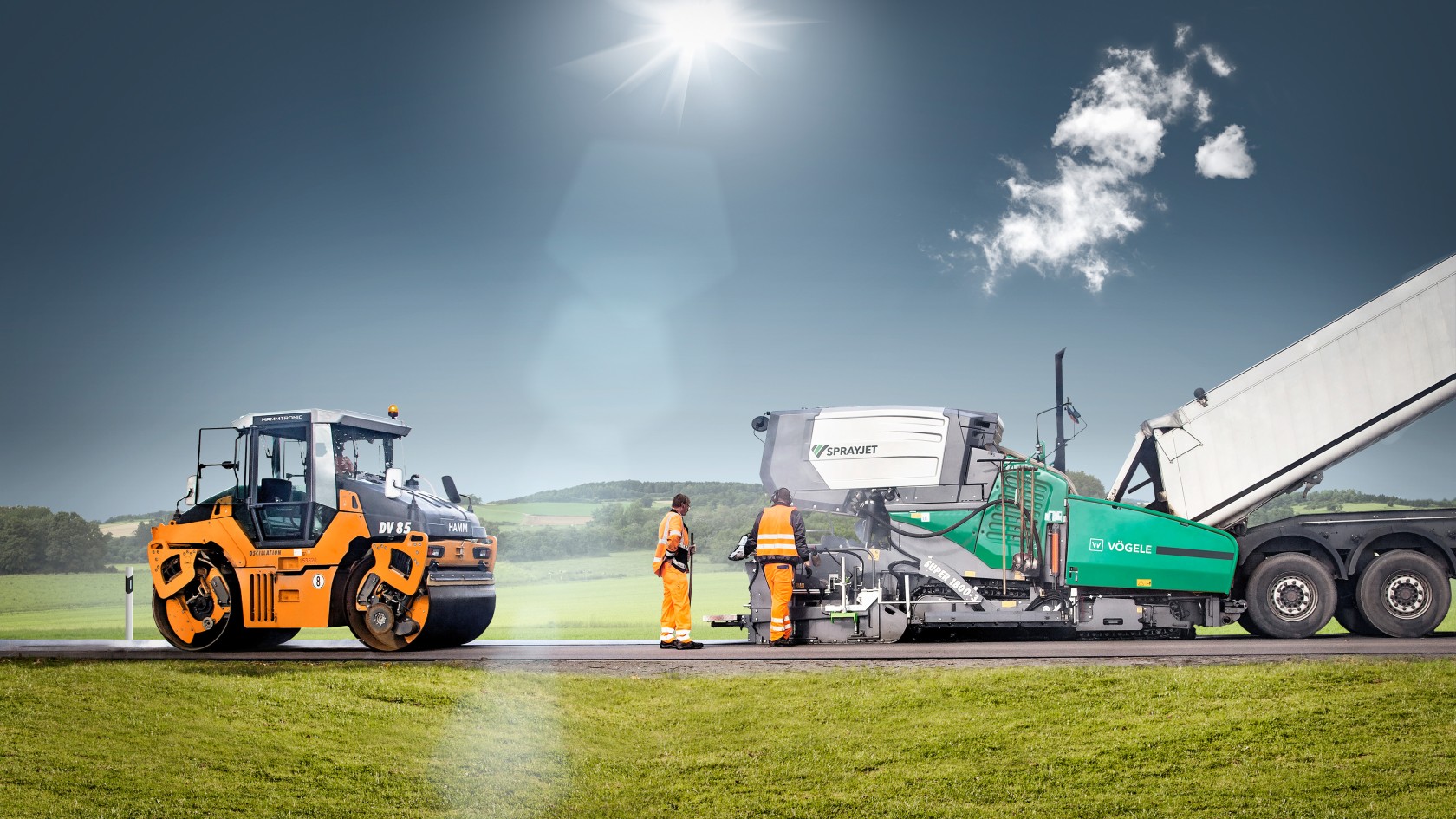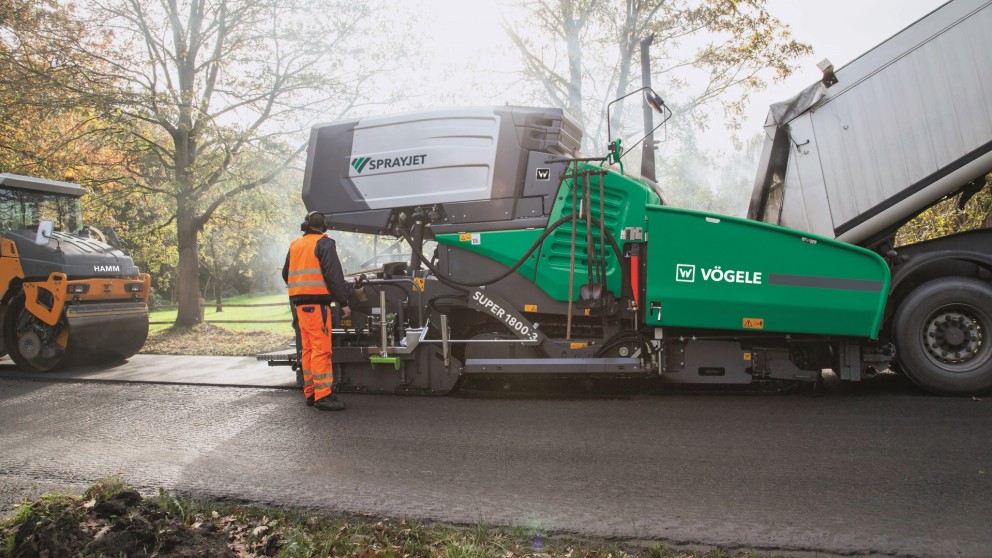Paving Thin Layers Hot


If only the top layer of a road is damaged, you don’t have to replace the entire road surface. A particularly cost-effective and environmentally friendly alternative is the process of “paving thin overlay hot onto a sprayed seal.”
Rehabilitation measures that can be carried out both quickly and cost-effectively are gaining in importance worldwide. One such particularly economical alternative to complete rehabilitation is the “paving thin layers hot” process.
This surface texture has the ideal properties to ensure an excellent bond with the thin layer of asphalt to be applied. The sub-base must be thoroughly cleaned before further processing. A paver with a built-in spray module is the preferred choice for paving thin layers hot. It automatically applies a tack coat of polymer-modified bitumen emulsion to seal the base. At the same time, it paves a thin asphalt surface layer just 1.2 to 2.0 cm thick.
"The VÖGELE 1800-3i SprayJet/SUPER 1800-3 SprayJet is suitable for paving thin layers hot on top of sealant as well as for conventional paving with pre-sprays."
VÖGELE spray paverThis surface texture has the ideal properties to ensure an excellent bond with the thin layer of asphalt to be applied. The sub-base must be thoroughly cleaned before further processing. A paver with a built-in spray module is the preferred choice for paving thin layers hot. It automatically applies a tack coat of polymer-modified bitumen emulsion to seal the base. At the same time, it paves a thin asphalt surface layer just 1.2 to 2.0 cm thick.
The SUPER 1800-3i SprayJet is suitable for paving thin layers hot on top of sealant as well as for conventional paving with pre-sprays.
Compaction is a major challenge when paving thin layers hot, as it requires the layers to be compacted uniformly but without causing surface unevenness. Dynamic compaction with oscillation is ideal to prevent damage to the underlying cold layer during compaction. Static compaction is another alternative, but should be carried out without vibration.
Interview with Friedhelm Pahlke Head of Sales, Germany at VÖGELE
To the Interview